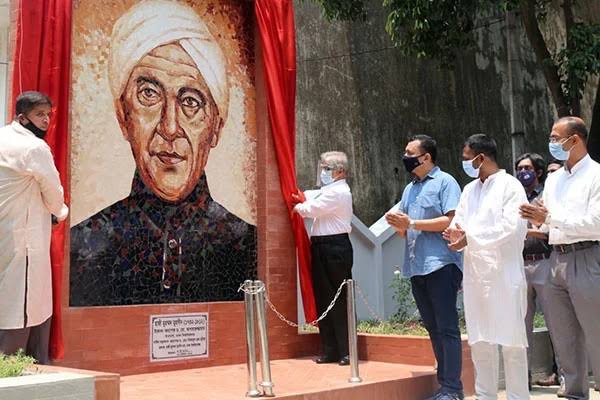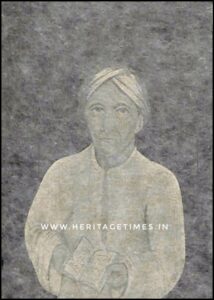UNDIVIDED BRITISH INDIA / WEST BENGAL:

Haji Mahommed Mohsin, a philanthropist, with scholarly zeal and a heart so big it could feed the entire town’s impoverished, has been a name that got lost in the celebration of the great men of India. Born into the family of Agha Fazlullah, one of the wealthiest Persian merchants settled in Hooghly with his son Haji Fazlullah, Mahommed Mohsin had been the fortunate recipient of generational wealth and fortune.
His elder half-sister, daughter of Agha Motaher, Manu Jan Khanum was his closest companion and with her help, he maintained the Imambara built by their forefathers. He received his early education while being home-tutored in Arabic and Persian studies.
His tutor Agha Shirazi, a Persian himself, would narrate stories of his travels and adventures to them, which ignited an interest in travel in Mohsin as well. At the age of thirty-two, he departed Hooghly to travel and see what the world had to offer.

His penmanship was highly revered and he also copied the Koran in his time of leisure. It is said that some of these copies were sold for a thousand rupees back then because of how ornately he had produced them. And he produced a total of 72 copies which were given to the poor. He was also a prominent figure during the Great Bengal famine of 1770 for helping the poor and suffering, significantly.
His travels took him to Arabia from where he went on a pilgrimage to Mecca and Madina, thereby conferring himself the title of ‘Haji’. He traveled through Arabia, Persia, Hindustan, and, Central Asia over the span of 27 years before finally coming back to Murshidabad (while briefly stopping in Lucknow) at the age of 60. However, he had to return to Hooghly eventually took care of his sister’s business and estates after Manu Jan Khanum’s beloved husband’s demise, the management of these estates had become cumbersome for her. Moreover, she relied only on Mohsin to take care of them respectfully.
After her death, she bequeathed her entire estate to Mohsin making him lavishly affluent at the age of 73. Mahommed Mohsin, however, led a simple life and only approved of his wealth in so far as he could help the poverty-stricken in as many ways as possible. In 1806, he signed a Deed of Trust conceding to use his entire income for charitable purposes. The Imambara in Hooghly still has a copy of this deed inscribed on one of its walls. He passed away at the age of eighty-two in 1812 buried close to his sister, Manu Jan Khanum.
However, it was because of Rajib Ali Khan and Shakir Ali Khan (two of Mohsin’s trusted) and later on their sons’ treachery that the trust fund put in place by Mohsin had been misused for personal purposes. Greed got the best of them and the nine shares, among which 7 shares were dedicated to religious and non-religious charities were also abused by these people. Eventually, the Government took this under its control and freed them from this mishandled management.
In 1836, the Hooghly College, now known as the Hooghly Mohsin College (changed in its centenary year) was inaugurated with the surplus funds in the hands of the government. The college was affiliated with the University of Calcutta and was built originally by General Perron on the banks of Hooghly. It still stands as an underappreciated yet beautiful and pristine college dedicated to an under-acknowledged man of iron.
source: http://www.heritagetimes.in / Heritage Times / Home> Education / by Kasturi Ghosh / November 17th, 2022








